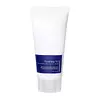What's inside
What's inside
 Key Ingredients
Key Ingredients

 Benefits
Benefits

 Concerns
Concerns

No concerns
 Ingredients Side-by-side
Ingredients Side-by-side

Lonicera Japonica Flower Extract
Skin ConditioningButylene Glycol
HumectantBis-Diglyceryl Polyacyladipate-2
EmollientDiphenylsiloxy Phenyl Trimethicone
Skin ConditioningGlycerin
HumectantCetyl Ethylhexanoate
EmollientCaprylyl Methicone
Skin ConditioningGlycereth-26
HumectantNeopentyl Glycol Diheptanoate
EmollientPolyglyceryl-4 Oleate
EmulsifyingWater
Skin ConditioningPolyglyceryl-6 Oleate
EmulsifyingPentaerythrityl Tetraethylhexanoate
EmollientPanthenol
Skin ConditioningPolyhydroxystearic Acid
EmulsifyingDisteardimonium Hectorite
StabilisingSorbitol
HumectantSodium Chloride
MaskingCetyl Palmitate
EmollientPolyglyceryl-4 Diisostearate/Polyhydroxystearate/Sebacate
EmulsifyingCaprylic/Capric Triglyceride
MaskingPolyglyceryl-3 Oleate
EmulsifyingCeramide NP
Skin ConditioningDipropylene Glycol
HumectantDiisostearoyl Polyglyceryl-3 Dimer Dilinoleate
EmollientEthylhexylglycerin
Skin ConditioningTocopherol
AntioxidantXanthan Gum
EmulsifyingDisodium EDTA
Polyglyceryl-10 Myristate
Skin ConditioningHydroxyacetophenone
AntioxidantPentylene Glycol
Skin ConditioningCaprylyl Glycol
EmollientEthylhexyl Palmitate
EmollientMentha Viridis Extract
MaskingMelilotus Officinalis Extract
AstringentCalendula Officinalis Flower Extract
MaskingLonicera Japonica Flower Extract, Butylene Glycol, Bis-Diglyceryl Polyacyladipate-2, Diphenylsiloxy Phenyl Trimethicone, Glycerin, Cetyl Ethylhexanoate, Caprylyl Methicone, Glycereth-26, Neopentyl Glycol Diheptanoate, Polyglyceryl-4 Oleate, Water, Polyglyceryl-6 Oleate, Pentaerythrityl Tetraethylhexanoate, Panthenol, Polyhydroxystearic Acid, Disteardimonium Hectorite, Sorbitol, Sodium Chloride, Cetyl Palmitate, Polyglyceryl-4 Diisostearate/Polyhydroxystearate/Sebacate, Caprylic/Capric Triglyceride, Polyglyceryl-3 Oleate, Ceramide NP, Dipropylene Glycol, Diisostearoyl Polyglyceryl-3 Dimer Dilinoleate, Ethylhexylglycerin, Tocopherol, Xanthan Gum, Disodium EDTA, Polyglyceryl-10 Myristate, Hydroxyacetophenone, Pentylene Glycol, Caprylyl Glycol, Ethylhexyl Palmitate, Mentha Viridis Extract, Melilotus Officinalis Extract, Calendula Officinalis Flower Extract
Water
Skin ConditioningButylene Glycol
HumectantGlycerin
HumectantCaprylic/Capric Triglyceride
Masking1,2-Hexanediol
Skin ConditioningLonicera Japonica Flower Extract
Skin ConditioningArtemisia Annua Extract
MaskingSodium Hyaluronate
HumectantCamellia Sinensis Leaf Extract
AntimicrobialCeramide NP
Skin ConditioningAcetic Acid
BufferingAmmonium Acryloyldimethyltaurate/Vp Copolymer
Glyceryl Stearate
EmollientAcrylates/C10-30 Alkyl Acrylate Crosspolymer
Emulsion StabilisingArginine
MaskingOctyldodecanol
EmollientEthylhexylglycerin
Skin ConditioningWater, Butylene Glycol, Glycerin, Caprylic/Capric Triglyceride, 1,2-Hexanediol, Lonicera Japonica Flower Extract, Artemisia Annua Extract, Sodium Hyaluronate, Camellia Sinensis Leaf Extract, Ceramide NP, Acetic Acid, Ammonium Acryloyldimethyltaurate/Vp Copolymer, Glyceryl Stearate, Acrylates/C10-30 Alkyl Acrylate Crosspolymer, Arginine, Octyldodecanol, Ethylhexylglycerin
 Reviews
Reviews

Ingredients Explained
These ingredients are found in both products.
Ingredients higher up in an ingredient list are typically present in a larger amount.
Butylene Glycol (or BG) is used within cosmetic products for a few different reasons:
Overall, Butylene Glycol is a safe and well-rounded ingredient that works well with other ingredients.
Though this ingredient works well with most skin types, some people with sensitive skin may experience a reaction such as allergic rashes, closed comedones, or itchiness.
Learn more about Butylene GlycolThis ingredient is an emollient, solvent, and texture enhancer. It is considered a skin-softener by helping the skin prevent moisture loss.
It helps thicken a product's formula and makes it easier to spread by dissolving clumping compounds.
Caprylic Triglyceride is made by combining glycerin with coconut oil, forming a clear liquid.
While there is an assumption Caprylic Triglyceride can clog pores due to it being derived from coconut oil, there is no research supporting this.
Learn more about Caprylic/Capric TriglycerideCeramide NP is a type of ceramide and formally known as ceramide 3.
Ceramides are intercellular lipids naturally found in our skin that bonds dead skin cells together to create a barrier. They are known for their ability to hold water and thus are a great ingredient for dry skin.
Ceramides are an important building block for our skin barrier. A stronger barrier helps the skin look more firm and hydrated. By bolstering the skin ceramides act as a barrier against irritating ingredients. This can help with inflammation as well.
If you would like to eat ceramides, sweet potatoes contain a small amount.
Read more about other common types of ceramides here:
Ceramide AP
Ceramide EOP
Ethylhexylglycerin (we can't pronounce this either) is commonly used as a preservative and skin softener. It is derived from glyceryl.
You might see Ethylhexylglycerin often paired with other preservatives such as phenoxyethanol. Ethylhexylglycerin has been found to increase the effectiveness of these other preservatives.
Glycerin is already naturally found in your skin. It helps moisturize and protect your skin.
A study from 2016 found glycerin to be more effective as a humectant than AHAs and hyaluronic acid.
As a humectant, it helps the skin stay hydrated by pulling moisture to your skin. The low molecular weight of glycerin allows it to pull moisture into the deeper layers of your skin.
Hydrated skin improves your skin barrier; Your skin barrier helps protect against irritants and bacteria.
Glycerin has also been found to have antimicrobial and antiviral properties. Due to these properties, glycerin is often used in wound and burn treatments.
In cosmetics, glycerin is usually derived from plants such as soybean or palm. However, it can also be sourced from animals, such as tallow or animal fat.
This ingredient is organic, colorless, odorless, and non-toxic.
Glycerin is the name for this ingredient in American English. British English uses Glycerol/Glycerine.
Learn more about GlycerinLonicera Japonica Flower Extract comes from the honeysuckle flower.
Honeysuckles have skin protecting, anti-viral, and anti-inflammatory properties. It contains many antioxidants, such as luteolin, caffeic acid, loniflavone, and chlorogenic acids.
This honeysuckle is native to East Asia and used in traditional Chinese medicine to treat fever and inflammation.
Learn more about Lonicera Japonica Flower ExtractWater. It's the most common cosmetic ingredient of all. You'll usually see it at the top of ingredient lists, meaning that it makes up the largest part of the product.
So why is it so popular? Water most often acts as a solvent - this means that it helps dissolve other ingredients into the formulation.
You'll also recognize water as that liquid we all need to stay alive. If you see this, drink a glass of water. Stay hydrated!
Learn more about Water